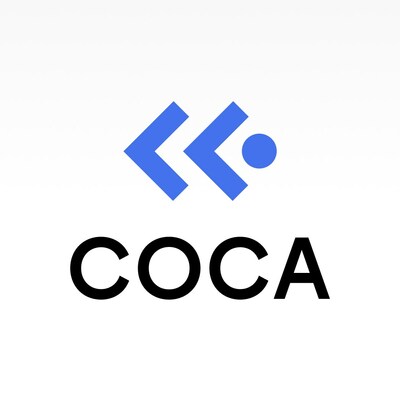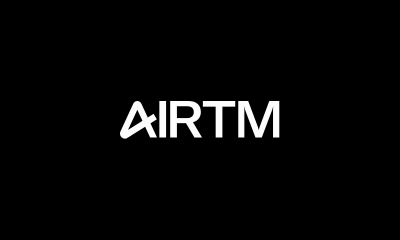Latest News
ROYAL CANADIAN MINT UNVEILS A NEW $1 CIRCULATION COIN HONOURING CANADIAN LITERARY ICON L. M. MONTGOMERY
CAVENDISH, PE, June 26, 2024 /PRNewswire/ — The Royal Canadian Mint is releasing a new $1 commemorative circulation coin honouring L. M. Montgomery, one of the most prolific and widely read authors in Canadian history. On the 150th anniversary of her birth, this coin pays tribute to Montgomery’s talent and enduring contributions to Canadian and world literature, as well as her role in popularizing Prince Edward Island (PEI) and Canada through her timeless Anne of Green Gables novel series and other memorable works. This coin will start entering circulation on June 27, 2024.
“The Anne of Green Gables novels are iconic works of Canadian literature, and have captivated millions of readers in Canada and around the world,” said The Honourable Chrystia Freeland, Deputy Prime Minister and Minister of Finance. “This new coin in tribute to L. M. Montgomery and her literary masterpieces will help keep the story of Anne in our pockets for generations to come.”
“The life and legacy of L. M. Montgomery is the kind of story that belongs on the first circulation coin to celebrate an author,” said Marie Lemay, President and CEO of the Royal Canadian Mint. “With her iconic tales of Anne Shirley still being translated into dozens of languages and adapted for stage and screen, we are proud to have represented Montgomery’s story on a coin that will be shared and treasured for generations.”
The coin was unveiled at Green Gables Heritage Place, the family house and farmstead administered by Parks Canada that Montgomery used as the inspiration for the setting of her novel Anne of Green Gables. Its artwork is the creation of Prince Edward Island artist Brenda Jones. It features a profile portrait of the beloved Canadian author
(1874-1942) around the time Anne of Green Gables was written, along with the author’s signature and the cat drawing she often included when signing her name.
To convey the power of Montgomery’s imagination, the coin design flows from the view of the author putting pen to paper (represented by the portfolio and inkwell) to that of Anne Shirley gazing out at PEI farmland – the real-life inspiration for many of Montgomery’s stories. The obverse features the effigy of His Majesty King Charles III by Canadian artist Steven Rosati.
“I greatly admire my grandmother, for her contribution to Canadian literature and culture, her strength of character, and the love, pride and sense of responsibility she gave to my family,” said Montgomery’s granddaughter, Kate Macdonald Butler. “For her to be commemorated on millions of circulation coins is an unimaginable honour and I hope Canadians will cherish it as much as I do, not only for the stories she told, but for the woman she was.”
Born in Clifton, PEI in 1874, L. M. Montgomery published hundreds of short stories and poems, in addition to 20 novels, including the famed: Anne of Green Gables stories. She eventually settled in Toronto, where she died in 1942. Montgomery was finally laid to rest in PEI’s Cavendish Cemetery – a last return to the island she so cherished.
Limited to a mintage of three million coins, of which two million are coloured, this new $1 circulation coin begins circulating on June 27, 2024. It will reach Canadians through their change as bank branches and businesses replenish their coin inventories.
Other collector products adding to this commemoration include coloured and uncoloured special wrap rolls of 25 uncirculated coins each, as well as a fine silver coin.
These collectibles can be ordered as of today by contacting the Mint at 1-800-267-1871 in Canada, 1-800-268-6468 in the US, or online at www.mint.ca/LMM.They are also available at the Royal Canadian Mint’s Ottawa and Winnipeg boutiques, as well as through the Mint’s global network of dealers and distributors.
About the Royal Canadian Mint
The Royal Canadian Mint is the Crown corporation responsible for the minting and distribution of Canada’s circulation coins. The Mint is one of the largest and most versatile mints in the world, producing award-winning collector coins, market-leading bullion products, as well as Canada’s prestigious military and civilian honours. As an established London and COMEX Good Delivery refiner, the Mint also offers a full spectrum of best-in-class gold and silver refining services. As an organization that strives to take better care of the environment, to cultivate safe and inclusive workplaces and to make a positive impact on the communities where it operates, the Mint integrates environmental, social and governance practices in every aspect of its operations.
For more information on the Mint, its products and services, visit www.mint.ca. Follow the Mint on LinkedIn, Facebook and Instagram.
Images of the circulation coin and collector products are available here.
View original content:https://www.prnewswire.co.uk/news-releases/royal-canadian-mint-unveils-a-new-1-circulation-coin-honouring-canadian-literary-icon-l-m-montgomery-302183096.html

Latest News
COCA Celebrates Q2 2024 with Record-Breaking Milestones and New Launches
HONG KONG, Aug. 7, 2024 /PRNewswire/ — COCA, a pioneering force in the crypto wallet and financial services industry, has achieved several remarkable milestones in Q2 2024. Thanks to the steadfast support of its user community, COCA has launched new features, expanded its partnerships, and garnered prestigious accolades, further solidifying its position as a leader in the crypto space.
Launch of Physical Cards
COCA has introduced its highly anticipated physical cards, which are now available globally and compatible with Apple Pay and Google Pay. These cards allow users to make transactions with ease, earning cashback rewards on their purchases. This significant launch marks a step forward in integrating crypto with everyday financial activities, enhancing user convenience and financial flexibility.
Wallet Growth Milestone
The company has reached a significant milestone with 510,000 active wallets, reflecting a 102% growth quarter-on-quarter. This surge in active wallets highlights the increasing trust and adoption of COCA’s platform, as more users join the COCA community to manage their crypto assets securely and efficiently.
Transaction Volume Surge
In Q2 2024, COCA processed over USD 450,000 in transactions through its platform, demonstrating the robust usage and popularity of its financial services. This impressive transaction volume underscores COCA’s commitment to providing smooth and efficient crypto payment solutions.
Integration with Revolut
COCA has made it easier for users to fund their wallets by integrating with Revolut. This new feature allows seamless loading of crypto assets, enhancing the overall user experience and accessibility of COCA’s services.
Award Recognition
COCA has been honoured with the “Best Startup” award in the Financial Revolution category at CONF3RENCE & BLOCKCHANCE 2024. This award is a testament to COCA’s innovative approach and significant impact on the future of finance, recognizing its efforts in driving forward the digital financial ecosystem.
New Strategic Partnerships
COCA has formed strategic partnerships with industry leaders such as Wirex Pay and GoMining. These collaborations aim to provide users with enhanced rewards and a superior overall experience. The partnerships signify COCA’s dedication to expanding its ecosystem and delivering greater value to its users.
Welcoming Pavel Matveev
COCA is excited to announce the addition of Pavel Matveev, Founder of Wirex, to its team as a Strategy and Product Advisor. Pavel’s extensive experience and visionary approach are expected to drive COCA’s strategic initiatives and product development, contributing to the company’s continued growth and innovation.
Season 2 Point System Launch
Season 2 of COCA’s popular point system has launched, offering users the opportunity to earn points through various activities, including trades, referrals, holding assets, and spending with COCA cards. With a prize pool of USDT 3500 and 5 Wirex Pay Nodes, this season promises exciting rewards and increased user engagement. The season ends on August 9th, so users are encouraged to participate actively.
NFT Giveaway
In a special giveaway, COCA distributed 1000 GoMining NFTs to lucky users. These NFTs provide unique benefits, including enhanced mining capabilities and exclusive digital collectibles, adding significant value to the user experience.
For further details on COCA’s Q2 achievements and upcoming initiatives, visit the company’s blog.
Website: coca.xyz
COCA continues to redefine the crypto experience with its innovative solutions, seamless integrations, and user-focused approach. The company’s recent milestones and future plans highlight its commitment to leading the way in the digital financial landscape.
About COCA
COCA is a next-generation crypto super app designed to simplify and secure the crypto experience for users worldwide. With innovations in security, usability, and integration, COCA is at the forefront of the digital asset revolution. For more information, visit coca.xyz.
Photo – https://mma.prnewswire.com/media/2477245/COCA_Q2_2024.jpg
Logo – https://mma.prnewswire.com/media/2338075/4848605/COCA_Logo.jpg

![]() View original content:https://www.prnewswire.co.uk/news-releases/coca-celebrates-q2-2024-with-record-breaking-milestones-and-new-launches-302216619.html
View original content:https://www.prnewswire.co.uk/news-releases/coca-celebrates-q2-2024-with-record-breaking-milestones-and-new-launches-302216619.html

Latest News
Stake and Earn with KuCoin’s Innovative GemPool Platform
VICTORIA, Seychelles, Aug. 7, 2024 /PRNewswire/ — KuCoin, a leading global cryptocurrency exchange, is excited to announce the launch of GemPool, its innovative new platform that allows users to acquire token airdrops as a reward for staking their crypto assets. This unique product is designed to provide early access to emerging crypto projects while offering rewards for their existing holdings at zero cost. By staking respective tokens in separate pools, users can farm new tokens and gain a foothold in the latest developments within the cryptocurrency market.
GemPool also offers flexible staking terms, allowing users to stake and un-stake their assets anytime within the designated period without lock-up restrictions. This flexibility ensures that users can manage their assets according to their preferences and market conditions. Additionally, GemPool provides zero-cost rewards, enabling users to earn tokens while holding their existing cryptocurrencies. By staking their tokens, users contribute to the growth of promising new projects, supporting innovation and development within the crypto space. With completion of tasks offered, users are eligible to earn multiplier bonus and receive more rewards.
Users can participate by staking KCS, USDT, or other specified assets in designated pools. The rewards are earned according to the respective yields of the pools, ensuring a fair and exciting experience for all users.
For more information on how to participate and the benefits of GemPool, please visit the KuCoin GemPool page.
About KuCoin
Launched in September 2017, KuCoin is a leading cryptocurrency exchange with its operational headquarters in Seychelles. As a user-oriented platform with a focus on inclusiveness and community engagement. It offers over 900 digital assets across Spot trading, Margin trading, P2P Fiat trading, Futures trading, and Staking to its 34 million users in more than 200 countries and regions. KuCoin ranks as one of the top 6 crypto exchanges. KuCoin was acclaimed as “One of the Best Crypto Apps & Exchanges of June 2024” by Forbes Advisor and has been included as one of the top 50 companies in the “2024 Hurun Global Unicorn List”. Learn more at https://www.kucoin.com/.
Logo – https://mma.prnewswire.com/media/2356857/KuCoin_Horizontal_Green_LOGO_Logo.jpg
![]() View original content:https://www.prnewswire.co.uk/news-releases/stake-and-earn-with-kucoins-innovative-gempool-platform-302216471.html
View original content:https://www.prnewswire.co.uk/news-releases/stake-and-earn-with-kucoins-innovative-gempool-platform-302216471.html

Latest News
Trust Wallet Launches Gamified Education Platform and Loyalty Program to Enhance and Reward Web3 Learning
DUBAI, UAE, Aug. 7, 2024 /PRNewswire/ — Trust Wallet, the world’s leading self-custody Web3 wallet and Web3 gateway trusted by over 130 million users, has launched Trust Wallet Quests, a gamified education platform within the Trust Wallet mobile app which encourages users to earn points while exploring and learning about Web3.
Users can engage in task-based challenges ranging from quizzes to complex problem-solving scenarios composed of various DeFi and Web3 activities, all designed to deepen their understanding of blockchain technology and decentralized applications (dApps), and expose them to exciting opportunities within Web3. As an incentive, users will earn Trust Points, a loyalty-based points system designed to reward user activity within the Trust Wallet mobile app. With Trust Points, users can earn rewards upon the completion of specific tasks, making Web3 more rewarding and fun.
In the future, Trust Points will offer additional gamification features, such as unlocking achievements, badges, and levels. This interactive approach not only boosts individual learning but also contributes to broader community education and adoption of decentralized technologies, making Trust Wallet Quests a dynamic and exciting way to reward loyal users and engage with communities in Web3.
On the motive for launching Trust Wallet Quests, Eowyn Chen, CEO of Trust Wallet, stated: “The complex technology and fast-paced industry can be intimidating for both new and seasoned users. The introduction of Quests on Trust Wallet further solidifies our commitment to making it easier for millions to navigate Web3, aligning perfectly with our mission to build a seamless Web3 hub and open ecosystem for all.”
Nate Zou, Head of Product at Trust Wallet, highlighted what to expect from Trust Points and Trust Wallet Quests: “Trust Points and Quests are just the first iteration of a much-needed reward system for our community. Within 2024, we have plans to build on this, combining rewards with many of our other web3 product offerings. Overall, we envision this points system not only changing how users engage with Trust Wallet, but also encouraging more collaboration between Trust Wallet, our users and other web3 ecosystem players.”
Trust Wallet Quests and Trust Points are now available on both Android and iOS versions of Trust Wallet’s mobile app. Download here: https://short.trustwallet.com/TrustWalletQuests
About Trust Wallet
Trust Wallet is the self-custody, multi-chain Web3 wallet and Web3 gateway for people who want to fully own, control, and leverage the power of their digital assets. From beginners to experienced users, Trust Wallet makes it easier, safer, and convenient for millions of people around the world to experience Web3, access dApps securely, store and manage their crypto and NFTs, buy, sell, and stake crypto to earn rewards, all in one place and without limits.

Photo – https://mma.prnewswire.com/media/2475264/image.jpg
Logo – https://mma.prnewswire.com/media/2475420/Trust_Wallet_Core_Logo_Blue_Logo.jpg
![]() View original content:https://www.prnewswire.co.uk/news-releases/trust-wallet-launches-gamified-education-platform-and-loyalty-program-to-enhance-and-reward-web3-learning-302215130.html
View original content:https://www.prnewswire.co.uk/news-releases/trust-wallet-launches-gamified-education-platform-and-loyalty-program-to-enhance-and-reward-web3-learning-302215130.html

-

 Fintech7 days ago
Fintech7 days agoFintech Pulse: Your Daily Industry Brief (Revolut, Bestow, Advyzon, Tyme Group, Nubank)
-

 Fintech5 days ago
Fintech5 days agoFintech Pulse: Your Daily Industry Brief (Chime, ZBD, MiCA)
-

 Fintech PR4 days ago
Fintech PR4 days agoAccording to Tickmill survey, 3 in 10 Britons in economic difficulty: Purchasing power down 41% since 2004
-

 Fintech5 days ago
Fintech5 days agoSPAYZ.io prepares for iFX EXPO Dubai 2025
-

 Fintech5 days ago
Fintech5 days agoAirtm Enhances Its Board of Directors with Two Strategic Appointments
-

 Fintech PR4 days ago
Fintech PR4 days agoPresident Emmerson Mnangagwa met this week with Zambia’s former Vice President and Special Envoy Enoch Kavindele to discuss SADC’s candidate for the AfDB
-

 Fintech PR4 days ago
Fintech PR4 days agoStay Cyber Safe This Holiday Season: Heimdal’s Checklist for Business Security
-

 Fintech PR6 days ago
Fintech PR6 days agoGan & Lee Pharmaceuticals Announces U.S. FDA Clearance of the IND application for the innovative Bi-weekly GLP-1RA GZR18 Injection, Bofanglutide, with chronic weight management Indication (A Phase 2 head-to-head with Tirzepatide clinical trial)




